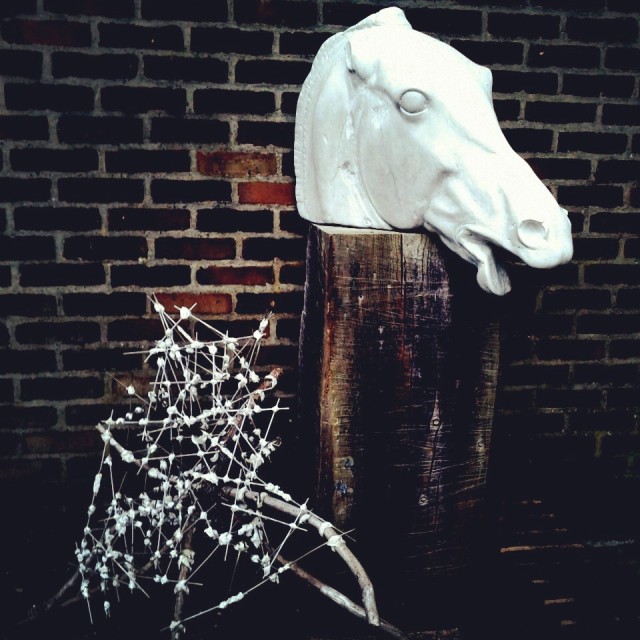I want to live – Sharon Olds
The most intense reading group I ever belonged to wasn’t really a reading group. It was a listening group.
I was working at the time for a community arts co-operative in North London. Each person in the group had a specialism (drawing, dance, percussion, comedy, creative writing, acting, singing etc.) which they designed and led workshops in, training the non-specialists in-house. We worked with a wide range of clients in the area, ranging from primary schools to day centres for mental health patients to reminiscence groups.
It was not glamorous. Sometimes clients would not turn up for the workshops; sometimes the workshops would finish five minutes after they had started. We met in a church hall behind Euston Station.
Towards the end of my stint at the co-operative I elected to work with a group of clients at a hospice. The premise was simple. We would meet with the clients for an hour or so each week in one of the hospice sitting rooms, and we would read poems and stories to them. I think it changed my life.
We would start the sessions by reading one or two poems from anthologies, after which clients would make requests. Two of the most frequently chosen poems were ‘Birches‘ by Robert Frost and ‘To Autumn‘ by John Keats. The group was not an exercise in literary criticism. Once a poem had been read out loud clients were entitled to say as much or as little about the poem as they wanted.
Chiefly I remember the poems provoking two kinds of response in particular: complete silence and deep personal reminiscence. Mostly there was silence.
One of the clients, a man I shall call Andrew, loved to listen to the poems with his eyes closed. He rarely said anything about them, except to occasionally repeat a favourite line. I can’t read ‘Birches’ now without seeing him in his recliner, head tilted back, eyes closed tight, repeatedly murmuring ‘One could do worse than be a swinger of birches’ and smiling to himself.
A woman whom I shall call Daphne practically told us her life story over the three sessions we had with her, entirely in response to ‘To Autumn‘. We learned about her semi-rural childhood in the post-war period, the long walks into the countryside that she would take with her siblings. Even now I can remember her description of the complete absence of traffic.
One subject remained not so much out of bounds but ignored, the imminent death of the group’s participants. As the group lost members and gained others it was a fact which did not need drawing attention to. It was, to use a phrase of Ted Hughes, ‘inscribed in the egg’ of their being there.
That the clients reacted to the poems we read them in the way they did argues for poetry’s ability to cut through the norms of social interaction and place the listener/reader simultaneously and intensely in the moment of hearing the poem and the experience of the poem itself. Had we been sharing memories of novels or films I wonder if I would still remember these responses in the same way, some twenty-seven years later? These are some of the people I thought of when I called this series Lifesaving Poems.

A wonderful and inspiring post from the heart, Really appreciate your writing!
LikeLike
Thanks so much for your encouragement. It is great to know someone out there is connecting with what I am up to.
As ever with best wishes
Anthony
LikeLike
Hi Anthony, you are more than welcome and I would say ‘more than connecting!’
LikeLike
Great stuff, I am delighted!
LikeLike
Thanks for this!
LikeLike
A pleasure. Thanks so much for stopping by and commenting.
As ever
Anthony
LikeLike
So true how poetry can cut through and create an experience that is deeper than our everyday levels of conversation. And what a gift to be able to share it in such an intense listening context.
Have you come across Kim Rosen’s book Saved by a Poem? Some really interesting research about this topic.
LikeLike
Thanks so much for your kind comment. I do not know the Rosen book; I will now look into it. Your blog is also an excellent resource. I like what you are up to very much. Hats off!
As ever with good wishes
Anthony
LikeLike
I’m really chuffed you like my blog. Yours has been an inspiration to me, so that means a lot. Keep doing what you’re doing. It’s a gift to us all.
LikeLike
This is beautiful and so powerful. You have a knack of capturing what is almost impossible to express in words, those moments of shared humanity.
And like Jean I would say – more than connecting. You are doing great work here!
LikeLike
I really appreciate what you say Joanna. Thanks again for taking the time to comment and to share what I am up to.
As ever
Anthony
LikeLike